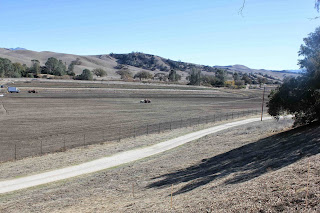When does the growing season start?
In places that have a real winter, it may be
when you sit in front of the fire and open that envelope of seed packages.
Beautiful pictures of bountiful
harvests.
Maybe you pour some hot cider, get out the graph paper and draw up a plan for where the turnips and beets will grow, and where the tomato plants will get their footing.
Maybe you pour some hot cider, get out the graph paper and draw up a plan for where the turnips and beets will grow, and where the tomato plants will get their footing.
To our wheat growers, planting the seed is not the
beginning.
On his fields in Santa
Barbara County, one of our wheat growers, Tom Shepherd, talks about what goes on before seed time. In his words, seed planting is not the
beginning. It is the end of the first
phase.
Good stewards of our lands make it clear that they are not only growing plants. They are growing the soil. Improving and nurturing it. And wheat – both as an edible grain, and as a cover crop for rotation &
Curtis Davenport talks about soil conditions on the land near Santa Ynez where he intends to plant 25 acres of Sonora wheat.
Back on his prepared fields Tom is planting
Red Fife, putting 50-pound sacks of seed into the hopper of his seeder … with
the help of Max Iniquez, the field foreman.
Our growers know that successful farming is not just about the plants. Or what shows up above
the ground.


Earth asks us to take an oath – an earth oath, which is a phrase you cannot says rapidly six times – and it is just as Hippocrates would have said about caring for the soil: "First of all, Do No Hurt."
Good stewards of the land are once again growing local grain for local
mills and local bakers. It is not a metaphor but a very real and literal grass roots
revolution.









Very cool. I'm not clear about how we LABB are involved with the project. Are we going to purchase the harvest? Will there be some discussion of the business part of this process?
ReplyDelete